FARSIDE News
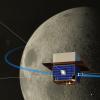 From CU Boulder Today: Scientists at CU Boulder have laid out a roadmap for a decade of scientific research at the moon. Teams from the university will participate in four upcoming or proposed space missions that seek to use the moon as a
From CU Boulder Today: Scientists at CU Boulder have laid out a roadmap for a decade of scientific research at the moon. Teams from the university will participate in four upcoming or proposed space missions that seek to use the moon as a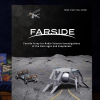 From Launch Pad Astronomy: Telescopes on the Moon has been a dream since the 1830's. But apart from two small telescopes on Apollo 16 and Chang'e-3, we haven't sent any telescopes to the Moon yet. But now that NASA is planning to return to the Moon
From Launch Pad Astronomy: Telescopes on the Moon has been a dream since the 1830's. But apart from two small telescopes on Apollo 16 and Chang'e-3, we haven't sent any telescopes to the Moon yet. But now that NASA is planning to return to the Moon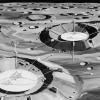 From Astronomy.com: For radio astronomers, Earth is a noisy place. Many modern electronics leak radio signals, which interfere with the long, faint wavelengths of light studied by radio observatories. And for decades, this invisible light
From Astronomy.com: For radio astronomers, Earth is a noisy place. Many modern electronics leak radio signals, which interfere with the long, faint wavelengths of light studied by radio observatories. And for decades, this invisible light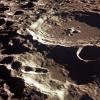 From Scientific American: As countries and private companies race to return to the moon, the need to protect the lunar far side—the hemisphere of Earth’s companion that always faces away from our planet—continues to grow. For decades,
From Scientific American: As countries and private companies race to return to the moon, the need to protect the lunar far side—the hemisphere of Earth’s companion that always faces away from our planet—continues to grow. For decades,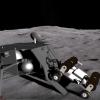 We’ve now passed the 50th anniversary of the Apollo 11 landing, and all eyes are back on the Moon. NASA is planning to return to the Moon by 2024 with its Artemis mission, the Chinese have put the Moon firmly in their plans for space exploration,
We’ve now passed the 50th anniversary of the Apollo 11 landing, and all eyes are back on the Moon. NASA is planning to return to the Moon by 2024 with its Artemis mission, the Chinese have put the Moon firmly in their plans for space exploration,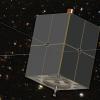 From Space.com: NASA's quest to return humans to the moon could boost a field of research that might not seem particularly lunar in nature: cosmology. But the far side of the moon could be a powerful place to answer some of the most compelling
From Space.com: NASA's quest to return humans to the moon could boost a field of research that might not seem particularly lunar in nature: cosmology. But the far side of the moon could be a powerful place to answer some of the most compelling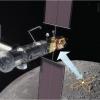 From Space.com: The far side of the moon is an attention grabber for many reasons. A new mission idea capitalizes on those reasons in a project dubbed the Farside Array for Radio Science Investigations of the Dark ages and Exoplanets, shortened to
From Space.com: The far side of the moon is an attention grabber for many reasons. A new mission idea capitalizes on those reasons in a project dubbed the Farside Array for Radio Science Investigations of the Dark ages and Exoplanets, shortened to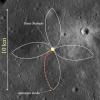 From Leonard David’s Inside Outer Space: The Moon’s farside is an attention grabber…for many reasons. For good measure, enter the Farside Array for Radio Science Investigations of the Dark ages and Exoplanets, shortened to enlightened shorthand:
From Leonard David’s Inside Outer Space: The Moon’s farside is an attention grabber…for many reasons. For good measure, enter the Farside Array for Radio Science Investigations of the Dark ages and Exoplanets, shortened to enlightened shorthand:

